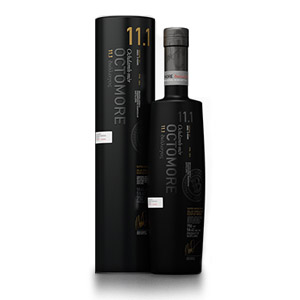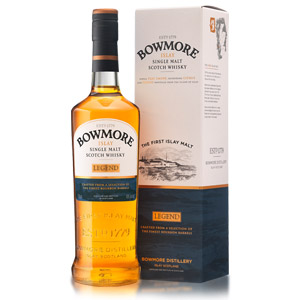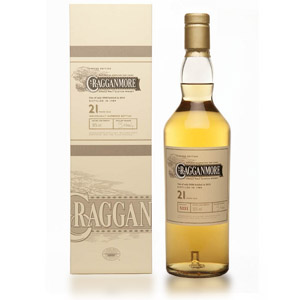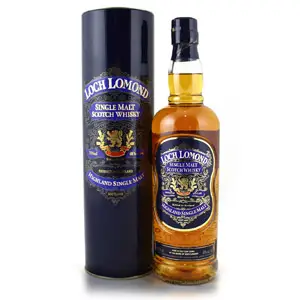In September I was invited to take part in a marketing campaign for Bruichladdich’s Octomore 11 series, which is slated for retail release 10/1/2020. I was to meet with 10 other whisky “influencers” (ugh) and bloggers, now “The Octomore 11”, to collaborate on an owner’s manual of sorts for Octomore. I maintain that I do not consider myself an influencer, but I wasn’t going to turn down the opportunity to taste Octomore 11 for free and get paid for doing some writing. We had two Zoom sessions, because who hasn’t had enough of Zoom lately, and we got to ask questions of brand ambassador Raymond Tibbs and Head Distiller Adam Hannett. I was assigned to pair up with Jeff Schwartz, The Whiskey Fellow, to write a history of the Bruichladdich distillery. While that piece of work was sponsored, the following blog posts were not, and although I received the review samples for free (perks!) my reviews below are my own and were not influenced by (or published in) the campaign. Or maybe I’m now solidly an industry shill. It’s the Internet in 2020, nothing’s real anymore.
Octomore, for those who haven’t had the pleasure of shelling out $150+ for a bottle of one of the past ten editions, is the most heavily-peated whisky in the world. It’s bottled at cask strength and comes out every year (ish) in either 3 or 4 varieties. In brief, 11.1 is 5 years old and is always aged only in ex-bourbon American oak. 11.2 is for the travel retail market (but can also be had online) and this year it was partially matured in ex-Pauillac wine casks and then finished in St. Julien wine casks (total age: 5 years old). 11.3 is 5 years old and is always made exclusively from locally-grown Concerto barley from Islay’s Octomore farm. There is no 11.4 this year, but there is a fourth edition of the Octomore 10 year-old, which is aged for 10 years in a combination of virgin oak casks and ex-bourbon American oak casks. All of them are super heavily peated, cask strength (or nearly), and are bottled without chill filtration or added coloring.
The story of Octomore is that when the newly-resurrected Bruichladdich was elbowed out of their malt supply at Diageo’s Port Ellen maltings (which didn’t want to handle their low-volume orders), whisky industry legend Jim McEwan sourced peated malt from Bairds Maltings in Inverness. While visiting, he discovered that Bairds was doing their malting the old-fashioned way: using a giant open-air outdoor peat fire. Modern maltings don’t do this, because it’s extremely variable. One windy day during the drying process will cause the peat levels to plummet, and no matter what the weather the final product is often way over the requested ppm (parts per million) peat levels requested by the distilleries who, as we all know, love their consistency. To combat this variability Bairds blends the heavily-peated barley with unpeated malt to hit the numbers specified by his customers. Jim asked whether anyone was distilling the uncut stuff, and was told that nobody would want to do that because it would be undrinkable. Anyone who has ever met Jim knows that could only be taken as a challenge. Instead of the 40 ppm malt he went there to buy (for the Port Charlotte brand, Bruichladdich’s peated line) he came home with 131 ppm. Luckily, Bruichladdich’s stills are unusually tall and narrow and this causes the resulting spirit to be very light — all of the heavier phenols that we associate with “heavily peated” whisky fail to climb that high and never make it into the heart cut. So while it’s true that 80 – 300 ppm malt would be undrinkable from anyone else’s stills, from the stills at Bruichladdich it comes out downright elegant and fruity. All Jim had to do was mature it just long enough in oak to mellow the alcohols and then bottle it at cask strength (later, he started mixing in just a little of Octomore Farm’s crystal clear spring water) and Octomore was born.
11.1 this year was distilled in 2014 from the 2013 harvest of Scottish-grown (not on Islay) Concerto and Propino barley. The barley was malted by Bairds in Inverness to 139.6 ppm and the final 30,000 bottles were bottled at 59.4% ABV. The release was aged for 5 years in ex-bourbon American oak casks from a variety of bourbon distilleries, namely Jim Beam, Heaven Hill, Buffalo Trace, and Jack Daniels. Although it is cask strength, Bruichladdich mixes in a “just a drop” of spring water from Octomore Farm’s natural spring.
Nose: A first whiff reveals cool, clean, citrus-flecked smoke. While the nose tickle is robust enough to keep my nose from going too deep in the glass, the aroma is clearly peated but in an understated, crisp, streamlined kind of way. There’s also sea breeze, lemon and lime zests, shortbread biscuits, and pale but fragrant malt. After a brief rest (and carefully venturing deeper into the glass), I find grapefruit, more lemon-lime soda, and subtle floral notes. The peat is present, but decidedly in the background. Definitely allow the glass to sit and develop, as it changes over time.
Palate: Lightly syrupy body. A blinding tongue burn, as expected, clears quickly to repeat a lot of the aroma notes, especially the lime and grapefuit. The peat is in the form of earthy campfire with crackling pine needles but, again, is in the background.
Finish: Very long. Now the peat takes over. Waves of mouth-drying earthy woodsmoke with vague bitter herbal notes – aloe? – continue through the finish, fading slowly along with a final flash of grapefuit.
With Water: The addition of quite a few drops of water instantly release a delicate rosewater note that was not there before, along with a suggestion of green banana. The palate is a little livelier, but no less powerful. It might also be slightly sweeter. I don’t notice any change on the finish. I highly recommend trying this without water first – brave it! – and then with water to see how it changes for you.
Overall: An experience. Octomore sears the mouth, but relents and delivers on that light floral fruity spirit that Bruichladdich is so proud of. The peat is heavy on the finish, but never overbearing – you feel like you get your money’s worth without being punched in the face with it. There’s peat, but there’s also room for delicate citrus and florals. Every true whisky lover should probably experience Octomore at least once in their lives, even if they don’t spring for a full bottle of it.
I should point out that despite being “only” 5 years old, this whisky never tastes young or immature. There’s never a hint of acetone or vodka or raw anything. It doesn’t have the wood sugars or weight of oak that comes with longer maturation, true, but it never tastes or smells unfinished or incomplete.


About The Distillery
An Islay distillery of another sort, Bruichladdich (“brook laddie”) or “The Laddie”, is now known for bucking the trend. In an era of more and more heavily-peated island whiskies, Bruichladdich produces a mildly-peated whisky with character derived more from oak and barley varieties than peat. Bruichladdich captured the hearts of craft whisky adherents with its rebellious approach to revitalizing the distillery after its 2001 reopening, producing numerous fancifully-named one-offs using maturing stock inherited from the previous owners, who mothballed it in 1994. It used these stocks to raise money each year until its ten year-old official bottling was ready. It also began marketing heavily-peated spirit under the name of nearby closed distillery Port Charlotte. Soon thereafter in 2012, however, it sold (or sold out?) to multinational spirits conglomerate Rémy Cointreau. The distillery’s process water rises through stone veined with iron, and runs over peat bogs. All Bruichladdich releases are of natural color and are not chill-filtered.








Great read about my favourite Islay whisky.